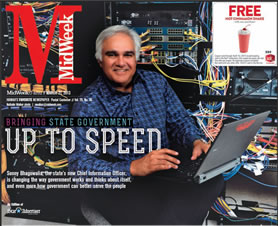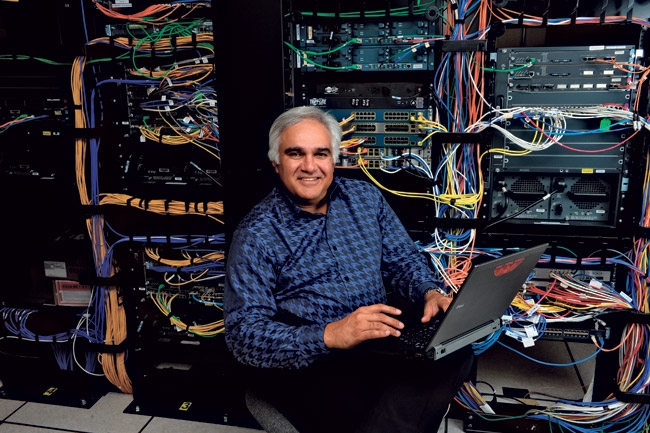Bringing State Government Up to Speed
By opening up all the data the government collects, one is arming businesses with the information they need to be successful.
cover-1-sonny-bhagovalia
“This is what you want – anyone can do this!” says Bhagowalia of the site at data.hpu.edu. “You don’t know where the next brilliance is – anyone can do this. People have innate skills, we just need to bring it out. This is what can happen with open data.”
He began this evolution to online government in Washington, D.C., which received an unprecedented 75 approval rating for the public’s experience with government services.
As he sees it, we need to reverse our thinking on what the government provides for the public.
“In the past, the government would say, ‘You will like what we give you,’ but what about what we want?” asks Bhagowalia, who also helped update IT for the FBI and U.S. Department of the Interior. “You have heard about these hackathons so that citizens can engage with us and say what else we should be doing.”
“Hackathon” is an insider term used to describe when one opens up something to everyone to contribute, usually involving software. But Bhagowalia believes it can work in all sectors – and it seems his boss believes in it, too.
“Sonny has built confidence and momentum across government agencies, industry leaders and the people of Hawaii toward modernizing our state’s aging technology infrastructure and systems – a long-term investment that will improve government and business processes,” says Gov. Neil Abercrombie. “His work transcends technology into a new way of doing business in Hawaii and providing public services.”
Helping the general public is only half the job, though. There are still 70 services the state performs that look internally, and everywhere he looks he sees redundancies and unnecessary steps that only make the government more cumbersome and costly.
He cites the state Department of Accounting and General Services, which is housed next door to his Alakea Street office. DAGS processes 22 million pieces of paper each month.
“In their data center you have these big mainframes, and right next to it you have stacks of paper – and in 2013, that’s not right,” says Bhagowalia. “One of the internal-facing services is Enterprise Resource Planning, which does the management of everything in our state regarding human resources, budget and finance, payroll, assets and grant management, how we procure stuff – all of that needs to be managed better.
“Right now it is all paper, and we don’t even know what the budget is, we just make spreadsheets and link them together and publish them up. We want a financial system where, at any point in time, you can see real costs. You should have a leave system where you can go in at anytime and see how much leave you have.
“Now we have forms, you do it by hand and turn it in, then another person takes that paper and puts it into another system. Look what we are doing here, it’s crazy! This has got to stop. If all of this was available online, you could just ask the system. We have to stop all this paperwork and protect our forests.”
His fervor is evident, and naysayers beware. He was told he would never get the funding he needed, but instead he got $25 million in his first year. From his decades of public service, he has learned that it isn’t always getting the new software in place that is toughest; it is getting the people to buy in.
“The hard one is organizational culture, getting people to work together across organizational lines so that they know they can really change,” says Bhagowalia. “How do you get them to come in and trust us? Come up with ideas, implement your ideas; you don’t have to wait on us.”
In order to get people to buy in, however, he has to earn their trust that he can truly make this revolution happen, and he believes that when they unveil the new site, myhawaii.gov, with its personalized dashboards and updates, he will have done just that.
“Previously, you would go to our site and you couldn’t find anything, you would just give up. We want people to not give up and have a pleasant experience,” says Bhagowalia.
“Now you will be able to see a service and interact with that service directly, taking away the paper-based silos and waiting in line, and taking it online, and everything being interactive online and mobile.”
That is something that none of us would have ever imagined, but with Bhagowalia at the helm, it is time we expected the unexpected.







